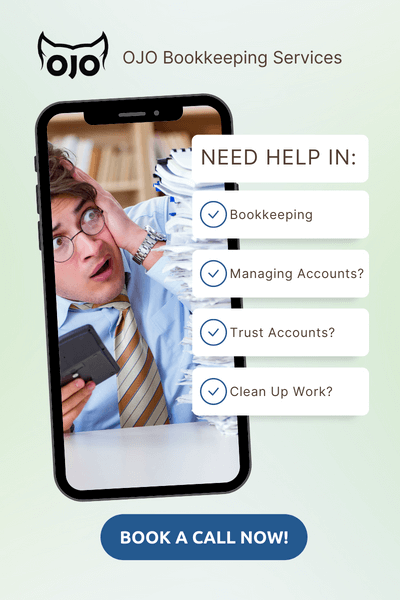Tired of manual bookkeeping? Automating bookkeeping can significantly streamline your financial processes. This guide covers the benefits, tasks you can automate, and steps to start. Learn how to save time, reduce errors, and leverage real-time financial data.
Key Takeaways
- Bookkeeping automation eliminates manual data entry, integrates seamlessly with software like QuickBooks and Xero, and provides real-time, accurate financial data.
- Automating key bookkeeping tasks like invoices, payroll, and sales tax reporting saves time, reduces errors, and ensures compliance.
- Choosing the right automation tools involves considering system integration, scalability, security, and user-friendliness, and is crucial for a smooth transition and effective financial management.
1 Understanding Bookkeeping Automation
Gone are the days when bookkeeping meant laboriously entering data into spreadsheets and manually balancing the books. Welcome to the era of financial reporting automation, where artificial intelligence (AI) and machine learning (ML) technologies are the new power players in accounting and financial reporting. These intelligent systems are designed to mimic the precision of a meticulous accountant, seamlessly integrating with popular accounting software like QuickBooks Online and Xero. No longer do finance professionals have to toggle between different data sources; automated financial reporting tools are now connected directly to transaction systems, recording data automatically and with impeccable accuracy.
The relentless pursuit of efficiency has led accounting teams to embrace automated processes that not only minimize manual errors but also carve out more time for strategic analysis and insights. Computers, with their innate incapacity for human-like errors, have become the stalwarts of accounting tasks, ensuring that financial information is not just up-to-date, but also accurate and reliable. This is automation at its best, offering a continuous flow of real-time financial data, empowering businesses to make informed decisions on the fly.
Key Bookkeeping Tasks You Can Automate
Picture this: invoices that practically process themselves, expenses that are tracked as if by magic, and payroll systems that ensure every employee is paid accurately and on time. This isn’t a fantasy; it’s what automating financial reporting tasks can do for a business. From the intricate dance of bank reconciliation to the meticulous choreography of financial reporting, automation tools are transforming the landscape of finance teams. They analyze financial data, manage costs, and create reports with a level of precision that manual processes can only aspire to.
But it doesn’t stop there. The automation solution reaches its tentacles into every crevice of bookkeeping, ensuring:
- Data validation is robust
- Sales tax reporting is punctual, avoiding fines and ensuring compliance
- Repetitive manual tasks that have long been the bane of accounting teams are now swiftly handled by automated processes.
This means more time for management reporting, strategic planning, and identifying key metrics that drive business growth.
Benefits of Automating Bookkeeping
Embracing automation is like giving your accounting team a superpower. With the mundane tasks of manual data entry taken care of, they’re free to focus on what truly matters: strategic analysis and nurturing client relationships. Imagine closing financial reports in a fraction of the time it used to take, all while ensuring the data is pre-checked and copied with precision. It’s not just about speed; it’s about the ability to adapt quickly to market conditions, armed with up-to-date financial information that can pivot a business toward success.
The ripple effect of automation goes beyond just time savings. It ensures the accuracy of financial statements, diminishing the specter of human error and enhancing business outcomes. With finance professionals stepping away from their calculators and into roles that leverage their expertise, they contribute more significantly to the organization’s strategic direction.
Moreover, with automated financial reporting, the storage and retrieval of financial documents become a breeze, heralding an era where the ‘paper chase’ is a thing of the past.
Choosing the Right Bookkeeping Automation Tools
Venturing into the realm of financial reporting automation requires the right arsenal. One doesn’t simply choose an automation tool; one must consider:
- How it will coalesce with the existing systems
- Its scalability
- The security it promises
- Will it play nice with heavy hitters like QuickBooks or Xero?
- Does it have the functionality your business craves, wrapped in a user-friendly package that your team will actually enjoy using?
These are the questions to ponder as you survey the landscape of software solutions, seeking out that perfect match that will support data-driven decisions for years to come.
But the journey doesn’t end with selection. The chosen financial reporting automation tool must come with a safety net – robust customer support that’s there when you need it the most. This is about more than just features; it’s about finding a partner in your automation journey, one that understands the nuances of your business and offers the right tools to elevate your accounting tasks.
Implementation Process for Bookkeeping Automation
The path to automating financial reporting is not without its twists and turns. It begins with a thorough examination of your current financial reporting processes and other financial processes, identifying bottlenecks and mapping out a clear plan of action. Preparation is key; financial data must be groomed and primed for migration to ensure that when the switch is flipped, the transition is as smooth as silk. It’s a meticulous process, with new workflows being introduced, tested, and refined until they operate like a well-oiled machine.
But technology alone won’t bring about the change you seek. It is the people – your accounting team – who need to be brought along on this journey. Through clear communication and comprehensive training, you transform your team from bystanders to active participants in the automation revolution. It’s about aligning everyone towards the same goal: a more efficient, accurate, and insightful financial reporting process.
Overcoming Challenges in Bookkeeping Automation
Embarking on the journey of automation is akin to navigating uncharted waters; challenges, like the cost of implementation and the intricacies of integration, loom on the horizon. Yet, with a strategic compass in hand, these obstacles can be navigated. Aligning new systems with the old, ensuring seamless data flows, calls for a deft touch and comprehensive planning. And let’s not forget the human element – the need for effective change management to bring your crew on board, aligning them with the new course you’ve set.
With robust security measures such as data encryption and intrusion detection systems, your financial data can be guarded against any threat. And while the siren call of static spreadsheets might tempt some, the promise of automated financial reporting – free from inconsistencies and version-control issues – is the true north that guides you to safer shores.
Best Practices for Successful Bookkeeping Automation
To master the art of automation, you have to adhere to certain best practices. It starts with the standardization of data and processes, laying down the groundwork for a system where accuracy reigns supreme. With the right training and support, your team will wield the tools of automation with confidence, navigating updated workflows with ease. Meanwhile, the guardianship of data quality remains paramount, ensuring that every piece of financial information remains pristine and reliable.
In this digital age, documents too must shed their physical forms, embracing the realm of bits and bytes to simplify management and safeguard against loss. Yet, as with any voyage, regular checks on your bearings are essential. Monitoring financial performance, and gathering feedback – these are the actions that allow you to adjust your sails, to optimize your course towards the pinnacle of efficiency and insight. Data collection plays a crucial role in this process.
Real-World Examples of Bookkeeping Automation
Let’s bring our exploration down to earth with a few tales from the trenches of automation. Across various sectors, businesses are witnessing a revolution in financial management, with automation paving the way to unparalleled efficiency and accuracy. Take, for instance, the small retail shop that saw a 30% decrease in time spent on bookkeeping tasks, freeing up resources to enhance customer service and fuel business growth. This same establishment reported a 40% reduction in errors, illustrating how automated systems can provide valuable insights and support informed decisions.
An e-commerce titan found its stride by synchronizing automated bookkeeping with its online sales platform, resulting in a 50% reduction in manual data entry and a robust framework for scaling its operations. These stories are a testament to the transformative power of automation – a catalyst not just for improving operational efficiency but for unlocking new avenues for growth and prosperity.
Conclusion
As we draw the curtains on our expedition into the realm of bookkeeping automation, it’s clear that the benefits are manifold. From the sharp reduction in human error to the liberation of time for strategic pursuits, the impact of automation on financial reporting is nothing short of revolutionary. The path to such an enlightened state of financial operations, replete with cost savings and robust data security, is paved with the strategies and best practices we’ve explored.
If you yearn for the day when your financial operations run as smoothly as a Swiss watch, when every transaction is recorded in a timely manner, and when strategic planning is informed by the most accurate of data, then the time to act is now. Embrace the future of bookkeeping, and let automation be the wind in your sails. Consult with OJO Bookkeeping, and let us guide you on your journey to a more efficient, insightful, and prosperous business.
Summary
In our journey through the world of bookkeeping automation, we’ve seen how the seamless integration of automation tools can transform the mundane tasks of data collection into a source of strategic insight. We’ve learned that the right automation solution doesn’t just streamline financial reporting processes; it elevates the finance team to new heights of efficiency and analysis. By automating the reporting process, businesses can better identify trends, manage cash flow, and make informed decisions that drive growth and enhance financial performance.
As we reflect on the insights shared, it’s clear that bookkeeping automation is not just a trend but a strategic imperative for any forward-thinking business. With the right approach, tools, and mindset, the leap into automation can yield remarkable business outcomes. So, take the knowledge you’ve gained and let it inspire you to transform your financial reporting into a wellspring of valuable insights.
Frequently Asked Questions
What are the main advantages of automating bookkeeping?
Automating bookkeeping offers increased efficiency, reduced errors, more strategic use of the accounting team’s time, and improved accuracy. It also provides access to real-time data for better decision-making. These advantages can greatly benefit your business operations.
Can automated bookkeeping systems integrate with existing financial software?
Absolutely! Automated bookkeeping systems are built to seamlessly integrate with popular accounting platforms like QuickBooks, Xero, and NetSuite, ensuring a smooth transition for your financial operations.
How does automation affect the role of the accounting team?
Automation allows the accounting team to move away from repetitive tasks and focus on strategic and analytical responsibilities, leading to a more significant contribution to business growth and strategy.
What should be considered when choosing a bookkeeping automation tool?
Consider factors such as integration, scalability, user-friendliness, security features, and customer support availability when choosing a bookkeeping automation tool to ensure it meets your business’s specific needs and goals.
Are there any challenges to be aware of when automating bookkeeping?
Yes, there are challenges such as initial implementation costs, integration complexity, managing change, and data security concerns, but with proper planning and strategies, these can be effectively addressed.












